
Mary Baker Eddy was an American religious leader and author who founded The Church of Christ, Scientist, in New England in 1879. She also founded The Christian Science Monitor in 1908, and three religious magazines: the Christian Science Sentinel, The Christian Science Journal, and The Herald of Christian Science. She wrote numerous books and articles, the most notable of which were Science and Health with Key to the Scriptures and Manual of The Mother Church. Other works were edited posthumously into the Prose Works Other than Science and Health.

Christian Science is a set of beliefs and practices which are associated with members of the Church of Christ, Scientist. Adherents are commonly known as Christian Scientists or students of Christian Science, and the church is sometimes informally known as the Christian Science church. It was founded in 19th-century New England by Mary Baker Eddy, who wrote the 1875 book Science and Health with Key to the Scriptures, which outlined the theology of Christian Science. The book became Christian Science's central text, along with the Bible, and by 2001 had sold over nine million copies.
The Christian Science Journal is an official monthly publication of the Church of Christ, Scientist through the Christian Science Publishing Society, founded in 1883 by Mary Baker Eddy. The first edition appeared on April 14, 1883, bearing the subtitle, "An Independent Family Paper to Promote Health and Morals". At that time, Eddy was the editor and main contributor to the Journal. The magazine is based in Boston.

Bliss Knapp, the son of Ira O. and Flavia S. Knapp, students of Mary Baker Eddy, was an early Christian Science lecturer, practitioner, teacher and the author of The Destiny of the Mother Church.

The Christian Science Publishing Society was established in 1898 by Mary Baker Eddy and is the publishing arm of The First Church of Christ, Scientist in Boston, Massachusetts.
A Christian Science practitioner is an individual who prays for others according to the teachings of Christian Science. Treatment is non-medical, rather it is based on the Bible and the Christian Science textbook, Science and Health with Key to the Scriptures (1875) by Mary Baker Eddy (1821–1910), who said she discovered Christian Science in 1866 and founded the Christian Science church in 1879. According to the church, Christian Science practitioners address physical conditions, as well as relationship or financial difficulties and any other problem or crisis. Despite the non-medical nature of their practice, Christian Science practitioners were aggressively prosecuted in the late 19th century by newly established state medical societies across the United States. Most state courts dismissed these actions because the courts ruled that they did not practice medicine. Practitioners are either "listed" or "unlisted," a designation that refers to a form of international accreditation maintained by The Mother Church, in Boston, Massachusetts. "Listed" practitioners are included in the directory of Christian Science practitioners on the church website, and printed in the Christian Science Journal.
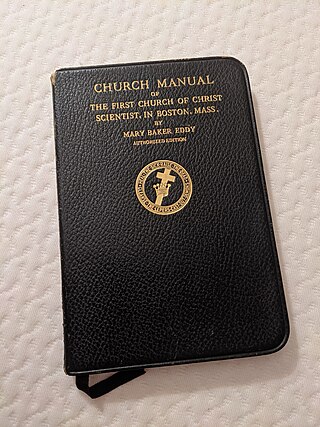
The Church Manual of The First Church of Christ, Scientist, in Boston, Massachusetts commonly known as the Manual of The Mother Church is the book that establishes the structure and governance of The First Church of Christ, Scientist, also known as The Mother Church, functioning like a constitution. It was written by Mary Baker Eddy, founder of the church. It was first published in 1895 and was revised dozens of times. The final edition, the 89th, was published in 1910.

Josephine Emma Curtis Hopkins was an American spiritual teacher and leader. She was involved in organizing the New Thought movement and was a theologian, teacher, writer, feminist, mystic, and healer; who taught and ordained hundreds of people, including notably many women. Hopkins was called the "teacher of teachers" and "mother of New Thought" because a number of her students went on to found their own churches or to become prominent in the New Thought Movement, including Charles and Myrtle Fillmore, founders of Unity Church; Ernest Holmes; and H. Emilie Cady, author of Unity's cornerstone text Lessons in Truth. According to Charles S. Braden, Hopkins influenced the development of New Thought "more than any other single teacher", and modern scholars have identified Hopkins as the founder of New Thought.

Septimus James Hanna, an American Civil War veteran and a judge in the Old West. He was a student of Mary Baker Eddy, who founded the Christian Science church. Giving up his legal career, he became a Christian Science practitioner, lecturer and teacher. Hanna occupied more leading positions within the church organization than any individual, serving as pastor, then First Reader of The Mother Church, as editor and associate editor of the periodicals, member of the Bible Lesson Committee, he served two terms as president of The Mother Church, he was teacher of the Normal (teachers) Class of 1907, later vice president and then president of the Massachusetts Metaphysical College.
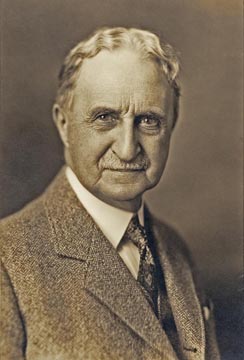
William Roedel Rathvon, CSB,, sometimes incorrectly referred to as William V. Rathvon or William V. Rathbone, is the only known eyewitness to Abraham Lincoln's Gettysburg Address, of the over 10,000 witnesses, to have left an audio recording describing that experience. He made the recording in 1938, a year before his death. A graduate of Franklin and Marshall College in Lancaster, Pennsylvania, and a successful businessman, he became a Christian Science practitioner, served as a public lecturer, Church treasurer and director of The First Church of Christ, Scientist in Boston, Massachusetts. He was treasurer from 1911 until he was elected to the Church's Board of Directors, on which he served from 1918 until his death in 1939. From 1908 to 1910 he was correspondence secretary for Christian Science founder Mary Baker Eddy. He also authored "The Devil's Auction" often republished without attribution as "The Devil's Garage Sale".

Augusta Emma Stetson was an American religious leader. Known for her impressive oratory skills and magnetic personality, she attracted a large following in New York City. However, her increasingly radical theories, conflicts with other church members including a well-known rivalry with Laura Lathrop, and attempts to supplant Mary Baker Eddy as the leader of The First Church of Christ, Scientist, led to her eventually being excommunicated from the church on charges of insubordination and of false teaching. Afterwards she began preaching and publishing various works on her theories which she named the "Church Triumphant," and started a controversial radio station to advance her cause.

Rev. Irving Clinton Tomlinson was an American Universalist minister who converted to Christian Science, becoming a practitioner and teacher. For a time, he lived as one of the workers in the household of church founder, Mary Baker Eddy, later writing a book about his experiences called Twelve Years with Mary Baker Eddy.

Annie MacMillan Knott was a practitioner and teacher in The First Church of Christ, Scientist. She was a student of Mary Baker Eddy, the founder of the religion, and served the church in various capacities including First Reader, Associate Editor of the Christian Science periodicals, member of the Bible Lesson Committee, one of the first women on the Christian Science Board of Lectureship, Trustee under the Will of Mary Baker Eddy, and the first woman to become a member of the Christian Science Board of Directors.
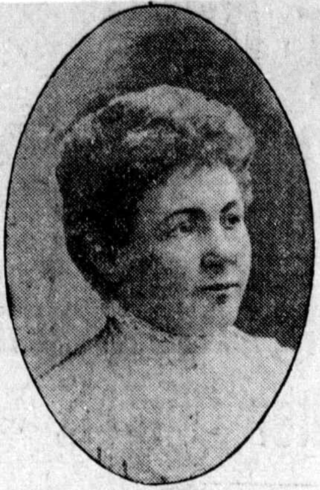
Frances Thurber Seal (1860–1932) was a Christian Science practitioner and teacher from the United States and one of three people to establish the religion in Germany. She also helped introduce it in Norway.
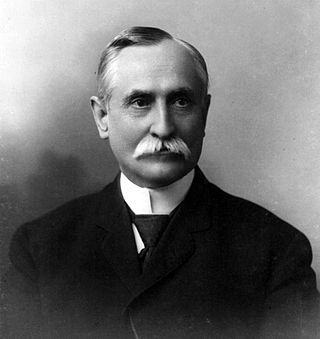
Calvin Augustine Frye was the personal assistant of Mary Baker Eddy (1821–1910), the founder of Christian Science.
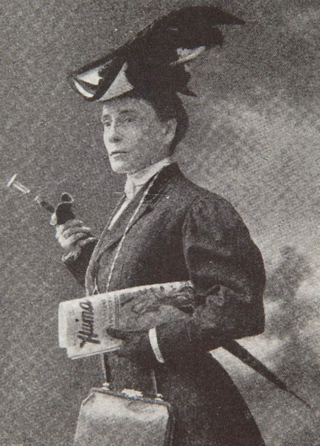
Sibyl Wilbur O'Brien Stone, best known as Sibyl Wilbur, was an American journalist, suffragist, and author of a biography of Mary Baker Eddy. She was a San Diego Branch Member of the National League of American Pen Women and a member of the New England Woman's Press Association.
Samuel Putnam Bancroft, also known as Samuel P. Bancroft, was an American Christian Scientist and an early student of Mary Baker Eddy.
Laura Lathrop (1845–1922) was an American religious leader in the Christian Science movement, primarily in New York City. A student of Mary Baker Eddy, she became a Christian Science healer, teacher, and church leader in the late nineteenth and early twentieth century. Eddy appointed her to establish Second Church of Christ, Scientist, New York. As such, she provided an alternative form of leadership in New York City to the more assertive and independent approach of the flamboyant Augusta Stetson, leader of First Church of Christ, Scientist, New York. Although often reluctant in accepting leadership roles, Lathrop was diligent in following Eddy's directives. She proved to be an effective spokesperson for Christian Science in the public square and before legislative committees. Over a twenty-six year period, Lathrop had a very active, demanding, and successful healing practice in New York City. Lathrop taught about Christian Science to many notables of her time, including Susan B. Anthony. Anthony took a class on Christian Science with Lathrop in 1888. Other prominent individuals who took class instruction in Christian Science from Lathrop were the Methodist Episcopal Bishop John Philip Newman and Jane Stanford, co-founder of Stanford University and wife of the industrialist and politician, Senator Leland Stanford.

Violet Spiller Hay was a Christian Science teacher and hymnist. She was one of the first teachers of Christian Science in the United Kingdom and the religion's first teacher in South Africa.
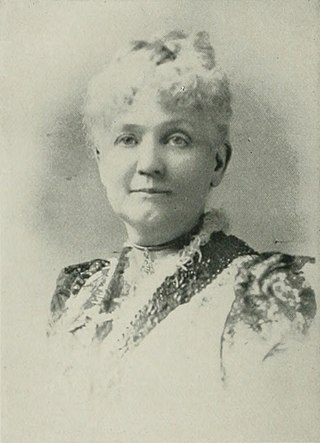
Sue Harper Mims, C.S.D., was a social leader in Atlanta, Georgia and the wife of Livingston Mims, the 37th mayor of Atlanta. She was a member of The First Church of Christ, Scientist, and helped found its branch church in Atlanta.
















